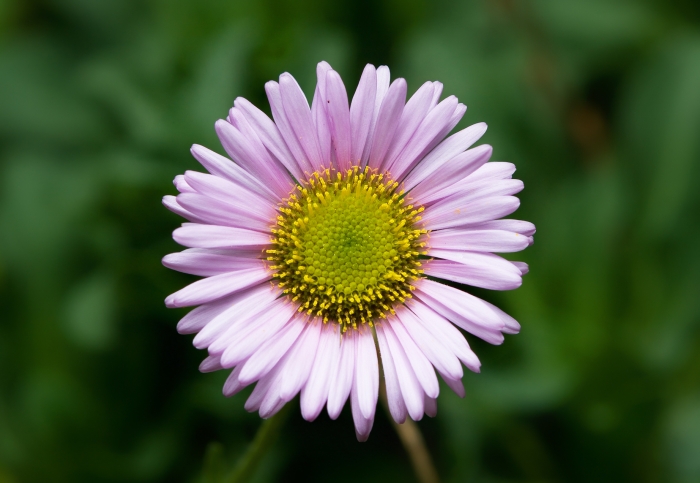Seaside Fleabane
(Erigeron glaucus)
Seaside Fleabane (Erigeron glaucus)
/
/

JJ Harrison (https://www.jjharrison.com.au/)
CC BY-SA 3.0
Image By:
JJ Harrison (https://www.jjharrison.com.au/)
Recorded By:
Copyright:
CC BY-SA 3.0
Copyright Notice:
Photo by: JJ Harrison (https://www.jjharrison.com.au/) | License Type: CC BY-SA 3.0 | License URL: https://creativecommons.org/licenses/by-sa/3.0 | Uploader: JJ Harrison | Publisher: Wikimedia Commons | Title: Erigeron_Glaucus.jpg | Notes: User created page with UploadWizard |
























































Estimated Native Range
Summary
Erigeron glaucus, commonly known as Seaside Fleabane, is an evergreen perennial herb native to coastal bluffs and sandy sites along the Pacific Coast, particularly in California and Oregon. It typically grows to heights between 5 and 30 centimeters (2.0 and 11.8 inches) with branching, nodding stems that can vary from glandular and hairy to hairless. The foliage is a basal rosette of spoon-shaped leaves, and the plant forms a low, spreading mound. Its flowers are daisy-like, with golden yellow disc florets at the center and a fringe of ray florets that range from deep blue and purple to nearly white. The flower heads are about 2.5 to 5 centimeters (1 to 2 inches) across and bloom profusely in the spring, with continued flowering sometimes into summer and fall.
Seaside Fleabane is valued for its drought tolerance and ability to thrive in coastal conditions, making it a popular choice for rock gardens, coastal restoration projects, and as ground cover in seaside landscapes. It attracts pollinators such as bees and butterflies, adding to its ecological value. This species is adaptable to a variety of soil types, provided they are well-drained, and it can tolerate salt spray, making it ideal for coastal gardens. It requires minimal maintenance once established and is relatively free of serious pests and diseases. However, it can be susceptible to root rot if overwatered or planted in poorly drained soils.CC BY-SA 4.0
Seaside Fleabane is valued for its drought tolerance and ability to thrive in coastal conditions, making it a popular choice for rock gardens, coastal restoration projects, and as ground cover in seaside landscapes. It attracts pollinators such as bees and butterflies, adding to its ecological value. This species is adaptable to a variety of soil types, provided they are well-drained, and it can tolerate salt spray, making it ideal for coastal gardens. It requires minimal maintenance once established and is relatively free of serious pests and diseases. However, it can be susceptible to root rot if overwatered or planted in poorly drained soils.CC BY-SA 4.0
Plant Description
- Plant Type: Herb
- Height: 0.3-1 feet
- Width: 1-2 feet
- Growth Rate: Moderate
- Flower Color: Pink
- Flowering Season: Spring, Summer
- Leaf Retention: Evergreen
Growth Requirements
- Sun: Full Sun, Part Shade
- Water: Low, Medium
- Drainage: Fast
Common Uses
Bank Stabilization, Bee Garden, Bird Garden, Border Plant, Butterfly Garden, Deer Resistant, Drought Tolerant, Fire Resistant, Groundcover, Low Maintenance, Potted Plant, Rock Garden, Salt Tolerant, Showy Flowers, Street Planting
Natural Habitat
Coastal bluffs and sandy sites along the Pacific Coast, particularly in California and Oregon
Other Names
Common Names: Beach Aster , Seaside Daisy
Scientific Names: Erigeron glaucus , Erigeron californicus , Erigeron hispidus , Aster bonariensis , Aster glaucus , Woodvillea calendulacea , Aster californicus , Erigeron maritimus , Erigeron squarrosus , Stenactis glauca
GBIF Accepted Name: Erigeron glaucus Ker Gawl.